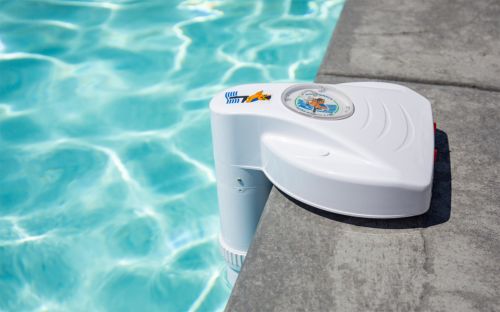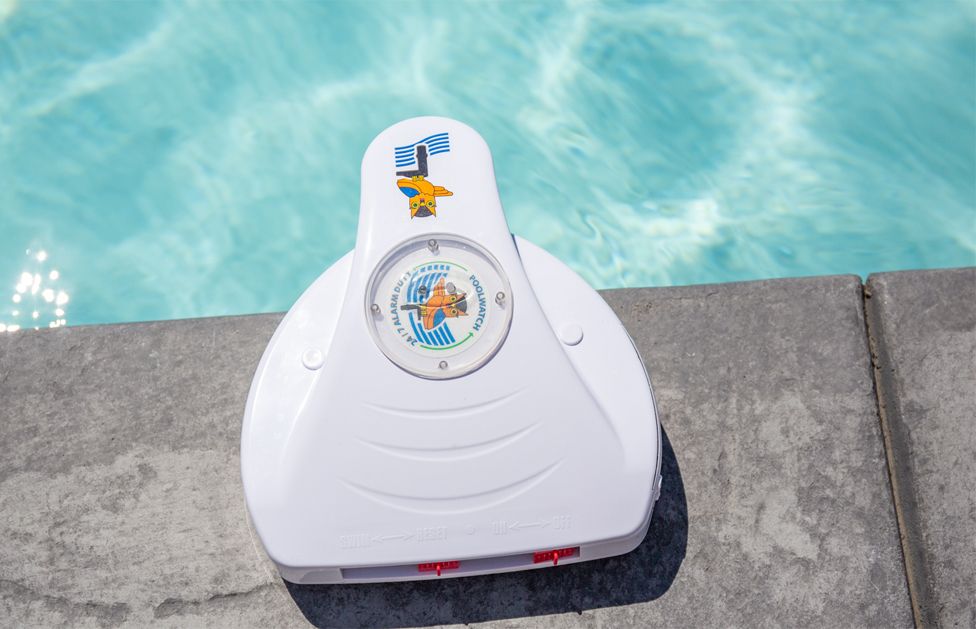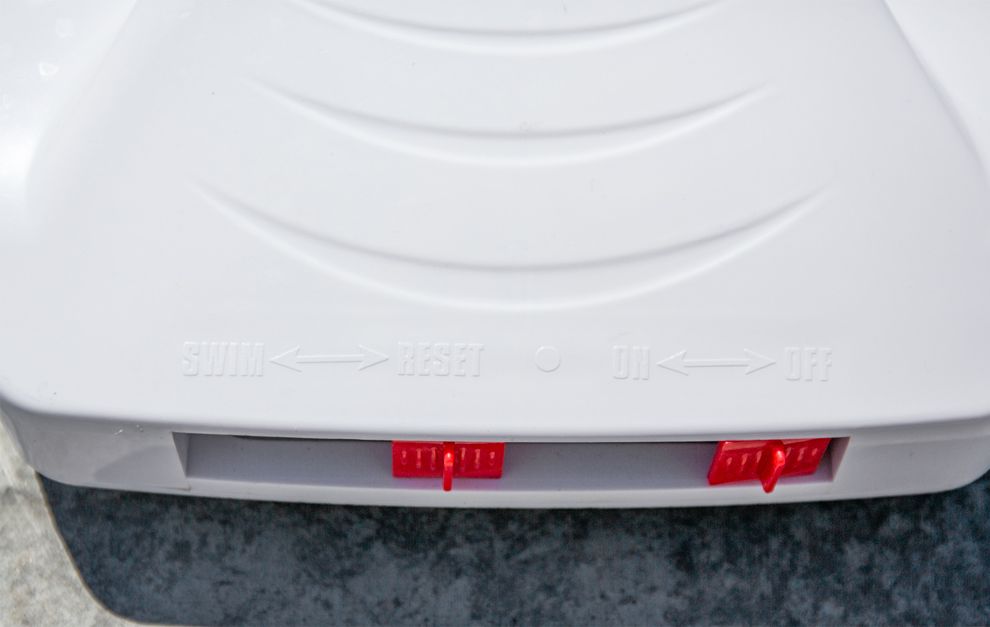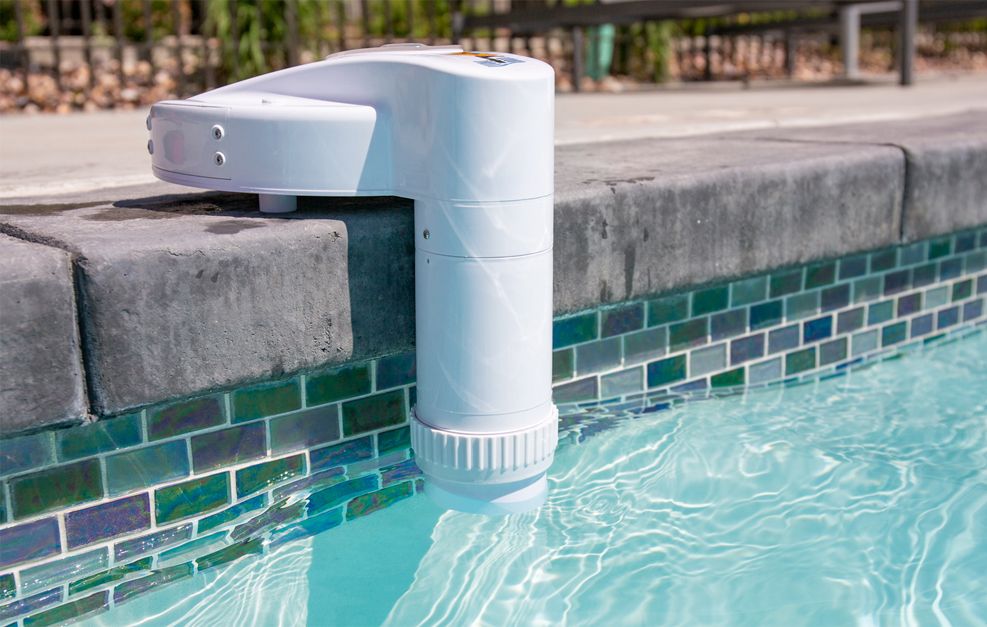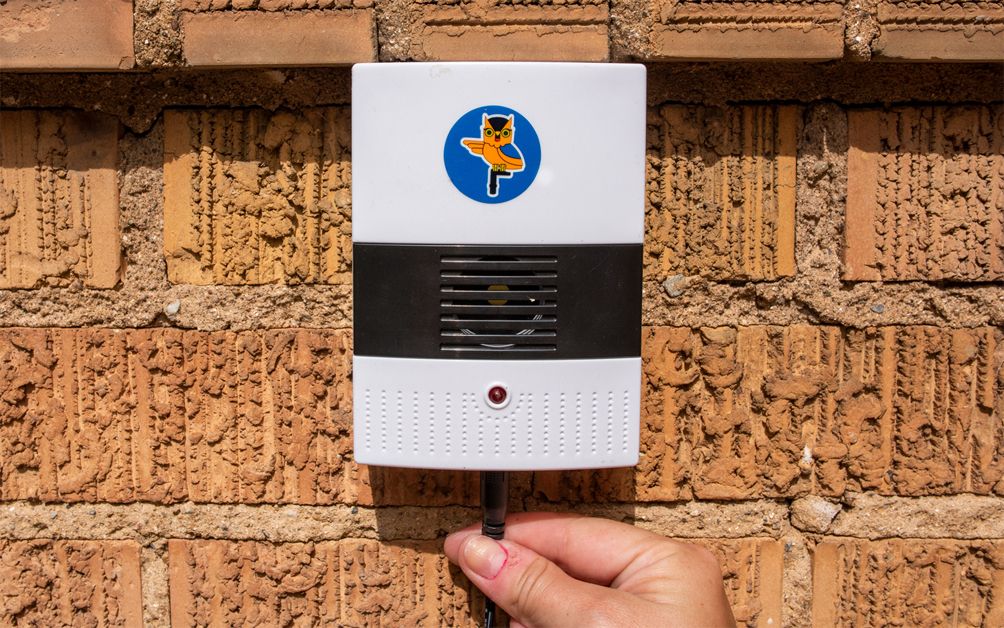In our tests, the Blue Wave fared pretty well. The alarm sounded when we tossed a wet sweatshirt into the pool as well as when a person got in the water, so it’ll definitely notice if a deck chair or wayward pet decides to take a dive. It didn’t go off when we tossed golf balls into the water unless we threw them close enough to splash the alarm, so it ultimately earned a B- for object detection. It got a C in our wind test because when we used a leaf blower to simulate weather, it didn’t immediately go off but ultimately did at a time when the “wind” frankly wasn’t blowing that hard.
You need to mount this pool alarm on a flat surface adjacent to the pool so the arm can hang down over the side and into the water. This 90-degree angle is required for the alarm to work accurately. You need to check out the instructions to see where to install it based on the size and shape of your pool – it should go on one of the long edges of a rectangle pool or at either tip of an oval pool. If you have a pool larger than 16 x 32 feet, you need a second alarm for accuracy. This range is on the small end for the alarms we tested. If you have a bigger pool, check out the Pool Patrol PA-30. The Blue Wave also requires six D batteries, but they’re slated to last an entire year. When the batteries start to die, the alarm chirps every eight seconds until you turn it off or replace them.
This pool alarm puts out 101.3 decibels of sound, making it the second-loudest alarm we tested after the SmartPool PE23 PoolEye AG/IG. Seriously, there’s no way you won’t hear this alarm because it’s about as loud as a chainsaw. It comes with a receiver, but it only works up to 100 feet away from the pool, giving it one of the shorter ranges of the alarms we tested. When the alarm sounds though, it’s pretty easy to turn off by pressing in the silver slider on the alarm and moving it to the “off” position. The slider also notes where the knob should be for "swim" mode, on, off and resetting the device.
The downside to an in-ground pool alarm is installation. It comes with some screws and hardware, but you need a drill. Once the Blue Wave is installed, you can adjust the sensor tube by twisting the ring around until it sits a mere 3.25 to 2 inches in the water. If the neck sits in the water any deeper, the alarm is less effective. The alarm beeps once and the light on top flashes white to signal when you can safely swim without it sounding. It automatically turns back on after the surface of the water sits still for three minutes. To manually activate the alarm immediately, simply move the slider to “reset/on.”
